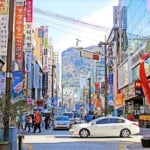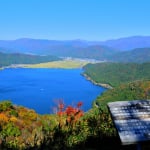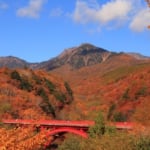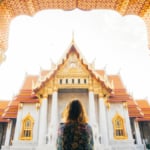Name: Tatsunoshima Sightseeing Cruise
Address: Tatsunoshima, Higashifure, Katsumoto-cho, Iki City, Nagasaki Prefecture
Official/Related Website URL: http://www.kankai.net/jf-k/
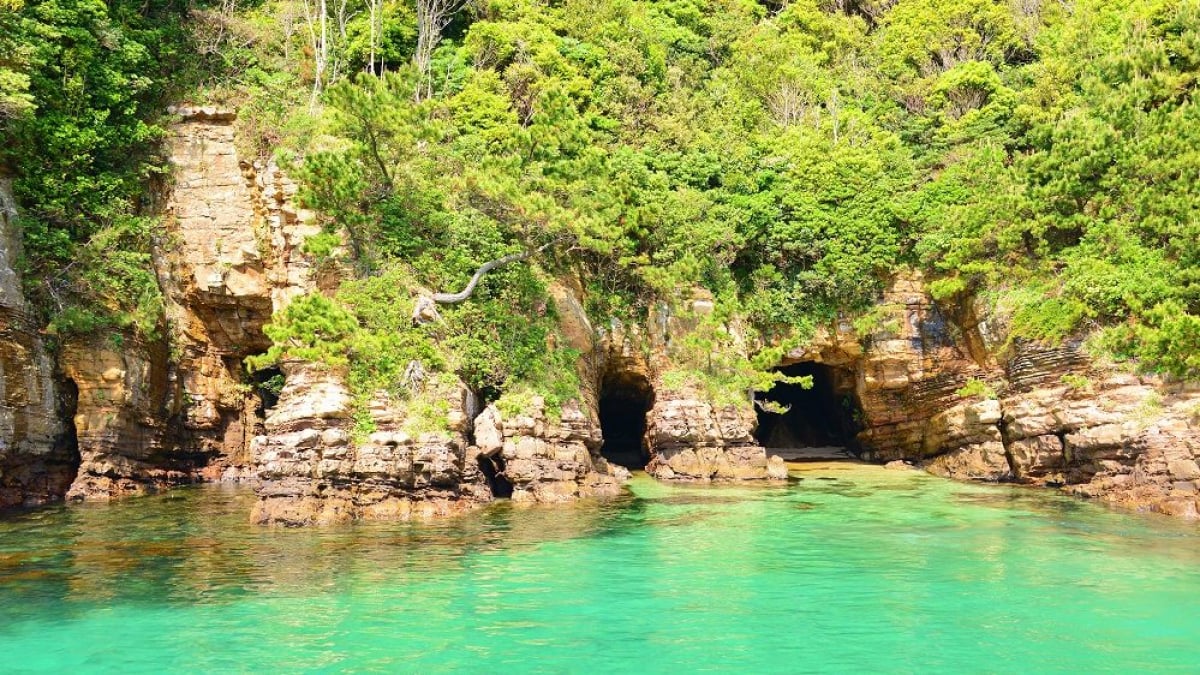
15 Recommended Sightseeing Spots in Iki – An Island of Sacred Rocks and Shrines
Iki is a fascinating island with a rugged coastline sculpted by wild waves, beautiful seas, and historic shrines that bring mythology to life. You can enjoy unique rock formations resembling monkeys and gorillas, as well as mystical experiences such as witnessing the ebb and flow of the tides.
The heart of Iki is "Iki Island" (壱岐島, Iki no Shima), the 20th largest island in Japan. Iki City, located in Nagasaki Prefecture, consists of Iki Island and four inhabited islands, along with 19 uninhabited islands, collectively known as the Iki Archipelago. Boasting breathtaking natural scenery and stunning seas, Iki is part of the Iki-Tsushima Quasi-National Park. Here, we introduce some of the best sightseeing spots you shouldn’t miss!
table of contents
[x] close
15 Recommended Sightseeing Spots in Iki – An Island of Sacred Rocks and Shrines
- Is Iki Far?
- 1. Tatsunoshima
- 2. Oni no Ashiato (Ogre’s Footprint)
- 3. Sakyo Bana
- 4. Saruiwa (Monkey Rock)
- 5. Hohoemu Gorilla Iwa (Smiling Gorilla Rock)
- 6. Iki Dolphin Park
- 7. Ikikoku Museum
- 8. Harunotsuji Ruins (Harunotsuji Ikikoku Royal Capital Reconstruction Park)
- 9. Sea Urchin (Uni)
- 10. Iki Shochu Brewery Tour
- 11. Harahoge Jizo
- 12. Kurosaki Battery Ruins
- 13. Shrines of Iki
- 14. Haru Ichiban Tower
- 15. Yunomoto Onsen
- ◎ Summary of Recommended Sightseeing Spots in Iki
Is Iki Far?
Since Iki Island in Nagasaki Prefecture is located between Kyushu and South Korea, it may seem far away, but it is actually only about 26 km away—just 1/7 of the distance between Kyushu and South Korea.
How to Get to Iki: By air, A flight from Nagasaki Airport to Iki Airport takes about 30 minutes. By sea, From Hakata Port, a jetfoil (hydrofoil boat) takes about 90 minutes, while a ferry takes around 2 hours. From Karatsu Port in Saga Prefecture, it takes about 100 minutes.
Getting Around Iki: The best way to travel around Iki is by car or rental car. The Iki City Tourism Association also offers electric-assist bicycles for rent.
1. Tatsunoshima
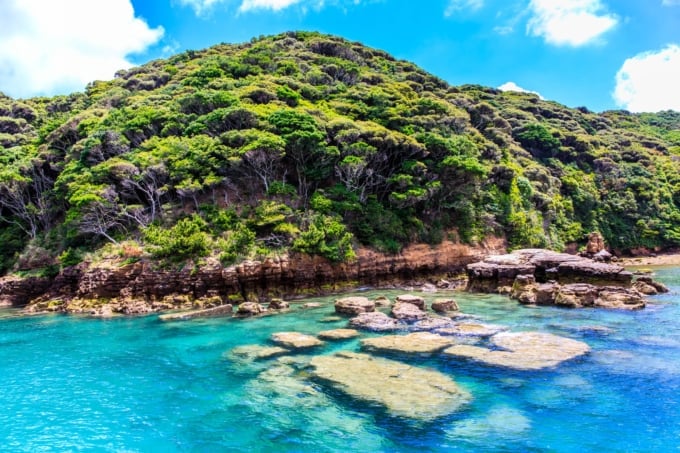
Tatsunoshima is an uninhabited island located about 1 km north of Iki Island, just a 5-minute cruiser ride from Katsumoto Port in northern Iki. Accessible only from March to November, it is a hidden gem often referred to as the "Jewel of Iki" or the "Treasure Box of the Genkai Sea."
Visitors can explore unique rock formations and dramatic cliffs, enjoy marine sports and swimming in the pristine waters, or take a scenic boat cruise. Tatsunoshima is one of the top recommendations for sightseeing in Iki, allowing you to experience its beauty both from the sea and the land.
♦Tatsunoshima Sightseeing Cruise
The sightseeing cruise to Tatsunoshima starts with a stop at the serene and stunning Tatsunoshima Beach. From there, the journey continues to explore towering cliffs and fascinating rock formations carved by the rough waves of the Genkai Sea.
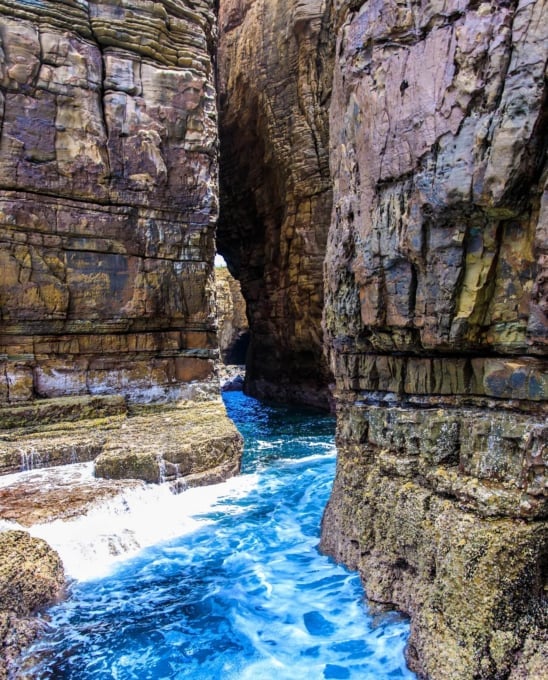
During the approximately 40-minute cruise around the coastline, visitors can see iconic sights such as Wolf Rock, the Sea Palace, Mammoth Rock, Shiofuki Rock, Great Folding Screen Rock, and Jaga Valley. The breathtaking contrast between the rugged cliffs and the crystal-clear emerald-green waters is truly mesmerizing!
♦Jaga Valley
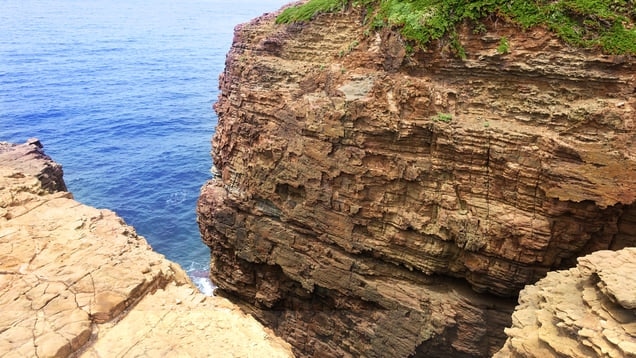
Jaga Valley is a stunning 50-meter-high cliff formed by marine erosion. From the sea, looking up at this rugged landscape can be quite intimidating. The steep cliff and the sight of the raging waves far below create a breathtaking yet nerve-wracking experience. Since there are no safety fences, please be extra cautious with your footing.
Jaga Valley is also home to the "Oni no Ashiato" (Ogre’s Footprint)—a massive right footprint said to have been left by Dai, the great ogre from the Onigashima legend. The left footprint can be found in Makizaki Park on Iki Island.
Name: Jaga Valley
Address: Tatsunoshima, Higashifure, Katsumoto-cho, Iki City, Nagasaki Prefecture
Official/Related Website URL: https://www.nihon-kankou.or.jp/nagasaki/422100/detail/42210ab2082043449
♦Tatsunoshima Beach
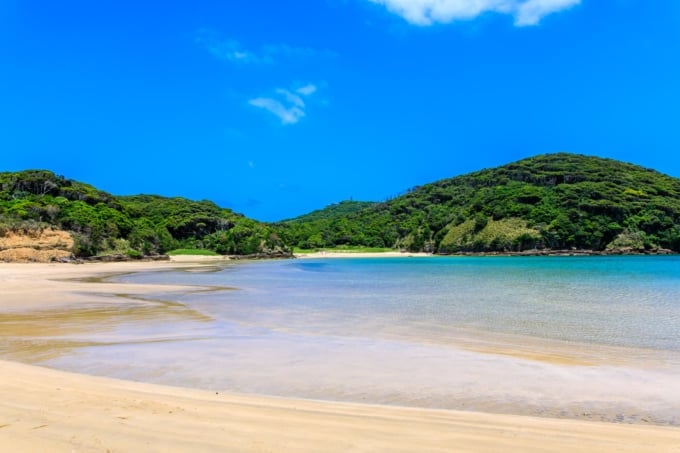
Tatsunoshima Beach is a beautiful white sand beach, selected by the Ministry of the Environment as one of Japan’s "Top 100 Best Swimming Beaches." With crystal-clear waters, it is perfect for snorkeling. Since it is located in a bay, the waters are calm and shallow, making it a safe and enjoyable spot for children as well.
Name: Tatsunoshima Beach
Address: Tatsunoshima, Higashifure, Katsumoto-cho, Iki City, Nagasaki Prefecture
Official/Related Website URL: https://www.ikikankou.com/spot/10099
2. Oni no Ashiato (Ogre’s Footprint)

Now, let’s return to Iki Island and visit the second "Oni no Ashiato" (Ogre’s Footprint), said to have been left by the great ogre Dai from the Onigashima legend with his right foot.
Just 50 meters from the Makizaki Park parking lot on the western tip of Iki Island, you'll find a massive hole approximately 30 meters high and 110 meters in circumference. This large depression was formed when a sea cave, eroded by waves, collapsed.
When viewed from above, it resembles Dai's footprint perfectly!
Name: Oni no Ashiato (Ogre’s Footprint)
Address: 1796 Watarahigashifure, Gonoura-cho, Iki City, Nagasaki Prefecture
Official/Related Website URL: https://www.ikikankou.com/spot/10110
3. Sakyo Bana
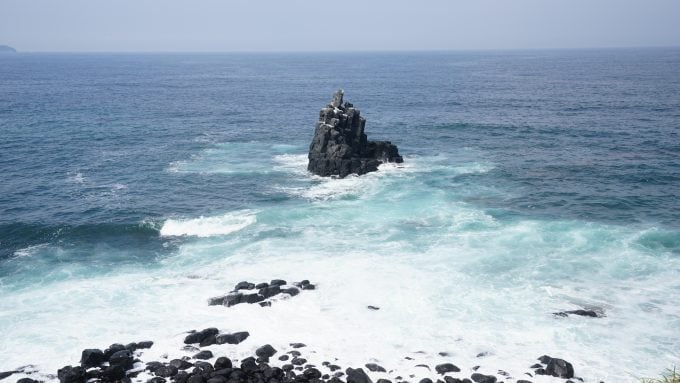
Sakyo Bana, located at the eastern tip of the Hachiman Peninsula, features vast natural grasslands and stunning columnar basalt cliffs that extend for about 1 km. The powerful white waves crashing against the cliffs make this one of the most scenic spots in Iki. Just offshore, you can see Oreich柱 (Oribashira Rock), a peculiar rock formation tied to Iki’s creation mythology, jutting out from the sea.
Sakyo Bana is easily accessible, just a 20-minute drive from Iki Airport or Indoji Port. Nearby, you can also visit other famous sightseeing spots such as Harahoge Jizo and Kojima Shrine.
Name: Sakyo Bana
Address: 1510-1 Moroyoshihonmurafure, Ashibe-cho, Iki City, Nagasaki Prefecture
Official/Related Website URL: https://www.ikikankou.com/spot/10103
4. Saruiwa (Monkey Rock)
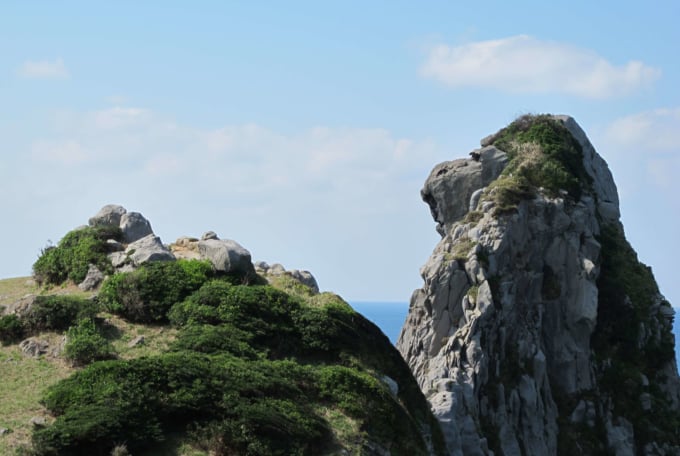
Iki Island, composed of basalt rock, is home to many uniquely shaped rock formations created by wave erosion. Among them, some are named after animals, but the most popular among tourists is the "Saruiwa" (Monkey Rock). True to its name, it perfectly resembles a monkey’s side profile.
This massive 45-meter-high rock is located at the western tip of the Kurosaki Peninsula on Iki Island. Even from the parking lot, you can see its imposing figure standing against the sea. Near the free parking lot, you'll find Saruiwa Bussankan "Osaru no Kagoya", which sells local souvenirs from Iki. There are also vending machines and restrooms, making it a convenient stop for a break during your sightseeing tour.
Name: Saruiwa (Monkey Rock)
Address: 870-3 Nitatsubure, Gonoura-cho, Iki City, Nagasaki Prefecture
Official/Related Website URL: https://www.ikikankou.com/spot/10093
5. Hohoemu Gorilla Iwa (Smiling Gorilla Rock)

The western region of Iki Island, where Oni no Ashiato (Ogre’s Footprint) is located, is filled with 30-meter-high cliffs and a rugged coastline. This area, called Makizaki Park, is one of the most famous sightseeing spots in Iki, offering visitors a chance to admire the raw power and mystique of nature.
If you walk a little north from Oni no Ashiato and look out toward the sea, you'll notice a rock formation that looks like a gorilla’s side profile gazing at the cliffs. This is the "Hohoemu Gorilla Iwa" (Smiling Gorilla Rock). After sharing a smile with this friendly-looking gorilla rock, take a leisurely walk through the vast natural grasslands of Makizaki Park. The stunning views of the horizon and the dramatic coastline, along with the refreshing sea breeze, make this one of Iki’s must-visit scenic spots.
Name: Hohoemu Gorilla Iwa (Smiling Gorilla Rock, inside Makizaki Park)
Address: Watarahigashifure, Gonoura-cho, Iki City, Nagasaki Prefecture
6. Iki Dolphin Park
Iki Dolphin Park is a facility where you can see and interact with bottlenose dolphins up close.
The dolphins freely swim within a designated area built in a cove, allowing visitors to observe them at their leisure. These curious and playful dolphins are also fascinated by tourists! During the "Dolphin Feeding Time", you can watch their training sessions while listening to explanations from the trainers.
Located in a cove at the northernmost tip of Iki Island on the Kushiyama Peninsula, Iki Dolphin Park is a small, municipally-run facility without restaurants or shops, making it an affordable and relaxing attraction. It’s a popular sightseeing spot in Iki, where visitors can enjoy a close encounter with dolphins in a peaceful setting.
Name: Iki Dolphin Park
Address: 2668-3 Kushiyama, Higashifure, Katsumoto-cho, Iki City, Nagasaki Prefecture
Official/Related Website URL: https://ikiparks.com/
7. Ikikoku Museum
Iki Island, referred to as "Ikikoku" in the ancient Chinese text "Records of Wei" (魏志倭人伝), is home to 279 ancient burial mounds and a total of 482 archaeological sites.
The Ikikoku Museum, managed by Iki City, serves as a central hub for the "Island-Wide Museum", showcasing excavated artifacts and historical insights. It helps visitors connect with the island’s rich history and heritage sites.
Designed by architect Kisho Kurokawa, the museum is known for its natural grass-covered roof and curved architectural design. Located northeast of the nationally designated Harunotsuji Ruins, it’s highly recommended to visit both together. From the 4th-floor observation room, you can enjoy a panoramic view of Iki Island, while the 3rd-floor rooftop grass plaza offers a clear view of the Harunotsuji Ruins.
The museum also features a "Kids Archaeology Research Lab" with hands-on activities for children, as well as various events related to science, music, and history. It is not only a top tourist attraction but also a beloved cultural space for Iki residents.
Name: Ikikoku Museum
Address: 515-1 Tsuruki Fure, Fukae, Ashibe-cho, Iki City, Nagasaki Prefecture
Official/Related Website URL: http://www.iki-haku.jp/
8. Harunotsuji Ruins (Harunotsuji Ikikoku Royal Capital Reconstruction Park)
The Harunotsuji Ruins is a nationally designated Special Historic Site and is Japan’s third recognized Yayoi period settlement, following the Toro Ruins in Shizuoka Prefecture and the Yoshinogari Ruins in Saga Prefecture. It has been developed as the Harunotsuji Ikikoku Royal Capital Reconstruction Park.
The park is divided into four main zones: Central Zone – Restored buildings and structures based on excavation findings. Moat Zone – A reconstructed multi-layered moat system that once surrounded the settlement. Plant Cultivation Zone – Where Yayoi-era plants are grown. Outdoor Experience & Excavation Display Zone – Showcasing unearthed pottery in its original excavated state.
Adjacent to the north side of the park, the Harunotsuji Guidance Center provides insights into excavation techniques and features a video exhibit on the site's restoration process. Visitors can also enjoy hands-on experiences such as magatama bead-making, pottery-making, glass bead-making, and fire-starting, which are especially popular. If you are traveling by car or rental vehicle, you can use the free parking lot at the Harunotsuji Guidance Center.
Name: Harunotsuji Ruins (Harunotsuji Ikikoku Royal Capital Reconstruction Park)
Address: 1092-5 Tsuruki Fure, Fukae, Ashibe-cho, Iki City, Nagasaki Prefecture
Official/Related Website URL: https://www.ikikankou.com/spot/10096
9. Sea Urchin (Uni)
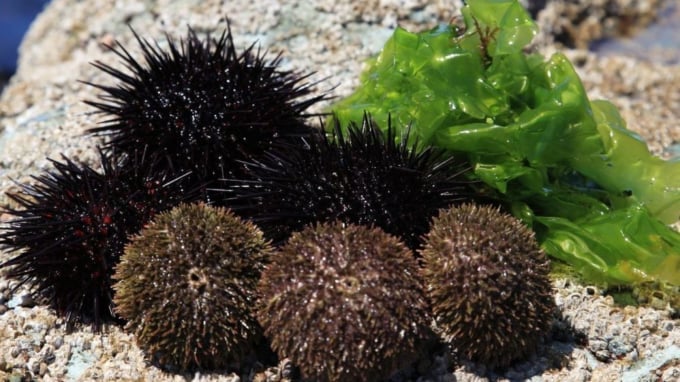
The Genkai Sea, where Iki Island is located, is one of Japan’s richest fishing grounds, as it is where warm and cold ocean currents collide. As a result, Iki is blessed with abundant seafood, and among its specialties, sea urchin (uni) is particularly famous. But instead of just eating it, why not experience cracking open a sea urchin yourself and learn more about it?
◆ Uni-Cracking Experience
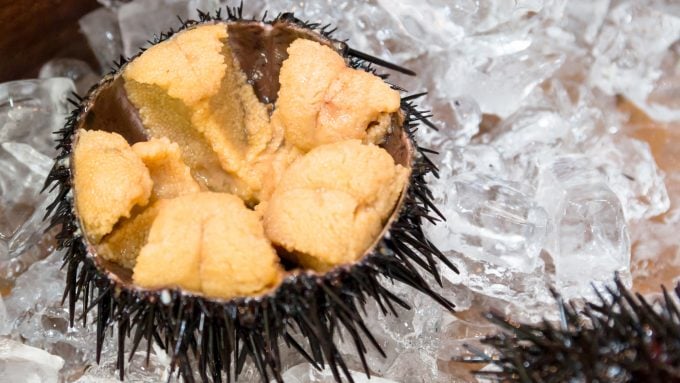
If you visit Iki between May and September, you can try the "Uni-Cracking Experience"!
This interactive activity includes an explanation of sea urchin fishing, a lesson on how to wash and crack open a sea urchin, and the chance to crack one open yourself. The best part? You get to enjoy a fresh "Mini Uni Bowl" (Mini Uni-don) made from the sea urchin you prepared—a truly unforgettable experience! You can reserve the Uni-Cracking Experience through the Iki City Tourism Association website.
Name: Uni-Cracking Experience
Address: (Harunotsuji Guidance Center) 1092-5 Tsuruki Fure, Fukae, Ashibe-cho, Iki City, Nagasaki Prefecture
Official/Related Website URL: https://www.ikikankou.com/feature/uni
10. Iki Shochu Brewery Tour
Iki Island is the birthplace of barley shochu (mugi shochu). The world-renowned "Iki Shochu" is unique because it uses rice malt (koji) and is made with a 1:2 ratio of rice koji to barley. As a rare initiative in Japan, Iki City has even established a "Toast with Iki Shochu" ordinance, and every July and November are designated as "Iki Shochu Promotion Months" to celebrate this local specialty.
Iki City is home to seven shochu breweries, one of which is Iki no Kura Brewery, where visitors can tour the production facilities, learn about the brewing process, and even enjoy tastings. Next to the brewery, there is also a museum showcasing traditional sake-making tools.
Name: Iki Shochu Brewery Tour
Address: (Iki no Kura Brewery) 520 Yutakehonmurafure, Ashibe-cho, Iki City, Nagasaki Prefecture
Official/Related Website URL: https://ikinokura.co.jp/#tour
11. Harahoge Jizo
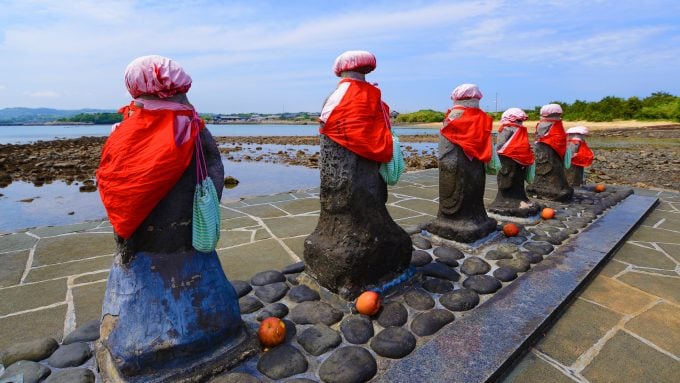
The Hachimanura area, located on the eastern side of Iki Island, is well known for ama (female free-diver) fishing, especially for sea urchins. Along the shoreline of Hachimanura, you can visit the Harahoge Jizo, a unique seaside Buddhist statue.
Harahoge Jizo is a set of six statues known as "The Six Jizo of the Sea", believed to protect souls from suffering in the six realms of existence (hell, hungry ghosts, animals, asuras, humans, and heaven). During low tide, visitors can approach and pray close to the statues, but during high tide, the water reaches up to their chests. The round holes carved into their chests were made to prevent offerings from being washed away by the waves.
Though the holes are usually hidden under the red bibs they wear, this is where the name "Harahoge" comes from—"hogeru" means "to have a hole" in the local Nagasaki and Iki dialect. The small bags and plastic bottle holders hanging from the statues serve as offering containers. While the origin of Harahoge Jizo remains unknown, they are believed to bring peace to the spirits of drowned ama divers, honor the whales caught around Iki, and offer protection from epidemics.
Name: Harahoge Jizo
Address: 1342-102 Moroyoshihonmurafure, Ashibe-cho, Iki City, Nagasaki Prefecture
Official/Related Website URL: https://www.ikikankou.com/spot/10097
12. Kurosaki Battery Ruins
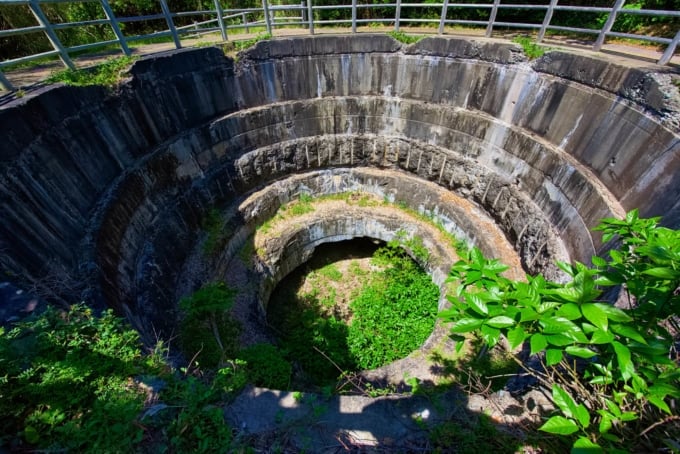
The Kurosaki Battery Ruins are located just a short walk uphill from the parking lot of Saruiwa, near the Osaru no Kagoya souvenir shop. Once called the largest artillery battery in the East, the Kurosaki Battery was built by the former Imperial Japanese Army to attack enemy ships navigating around Iki Island. Although it never fired a single round during wartime, during a test fire, the shockwave was so powerful that it shattered all the glass windows in nearby houses.
This underground seven-story secret fortress was dismantled after the war, but the massive battery ruins remain as a reminder of the horrors of war. Visitors can freely explore the interior, so it’s recommended to bring a flashlight. From above, you can also see the huge cannon holes that once housed the artillery.
Name: Kurosaki Battery Ruins
Address: 826-1 Nitatsubure, Gonoura-cho, Iki City, Nagasaki Prefecture
Official/Related Website URL: https://www.ikikankou.com/spot/10104
13. Shrines of Iki
According to the "Kojiki" and "Nihon Shoki", Japan’s "Kuniumi Myth" (Birth of the Nation) tells the story of the gods Izanagi-no-Mikoto and Izanami-no-Mikoto, who created the Japanese islands in the following order: Awaji Island, Shikoku, Oki Island, Kyushu, Iki Island, Tsushima, Sado Island, and finally Honshu.
Iki Island, the fifth island to be born, is home to over 1,000 shrines, from grand sanctuaries to small sacred sites. Among them, here is one particularly recommended shrine.
◆ Kojima Shrine
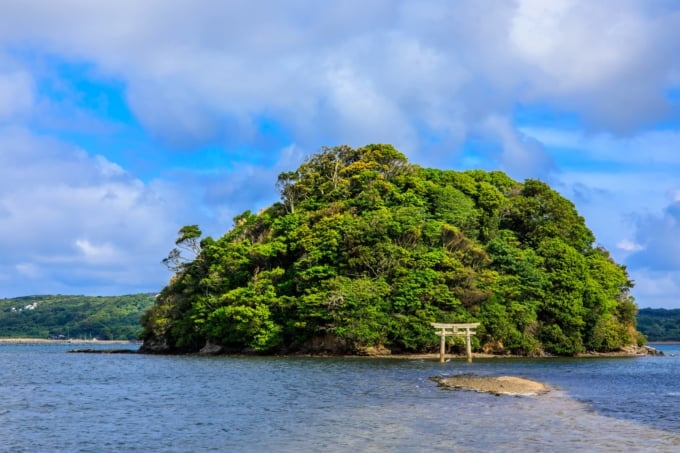
Kojima Shrine is located on a small island called "Kojima," about 150 meters offshore.
During high tide, the shrine appears to float on the sea, but during low tide, a pathway emerges, allowing visitors to walk to the island. Because of this mystical phenomenon, Kojima Shrine is often called "Iki’s Mont Saint-Michel", and it is considered a powerful spiritual site and a must-visit tourist attraction.
Name: Kojima Shrine
Address: 1969 Moroyoshifutamatafure, Ashibe-cho, Iki City, Nagasaki Prefecture
Official/Related Website URL: https://www.ikikankou.com/spot/10092
◆ Sumiyoshi Shrine
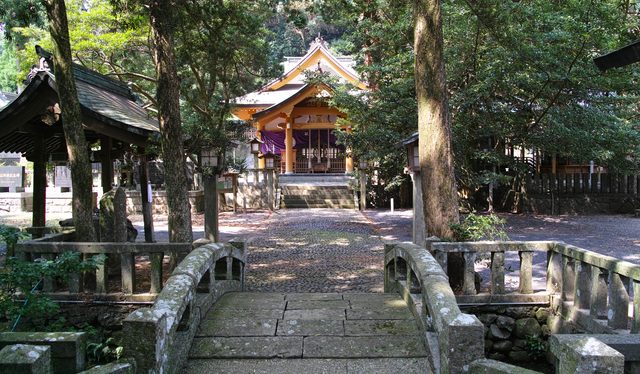
Among the many shrines in Iki, Sumiyoshi Shrine is considered the most prestigious. While there are around 600 Sumiyoshi Shrines across Japan, including the famous Sumiyoshi Taisha in Osaka, Iki’s Sumiyoshi Shrine is said to be the oldest in Japan.
The shrine enshrines the three Sumiyoshi deities: Sokototsu-no-O-no-Mikoto (底筒男命), Nakatotsu-no-O-no-Mikoto (中筒男命), and Uwatsutsu-no-O-no-Mikoto (表筒男命).
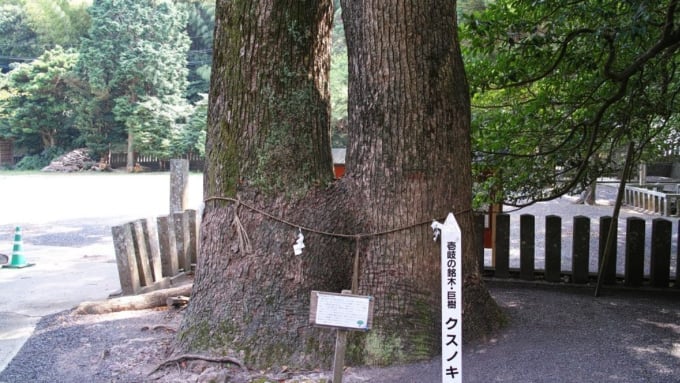
Within the shrine grounds, there is a sacred tree called "Meoto Kusunoki" (Couple Camphor Tree), which grows as two trunks from a single root.
It is said that if men walk around it counterclockwise and women walk around it clockwise, their wishes will come true. If you visit Sumiyoshi Shrine in Iki, be sure to stop by Meoto Kusunoki as well.
Name: Sumiyoshi Shrine
Address: 470-1 Sumiyoshihigashifure, Ashibe-cho, Iki City, Nagasaki Prefecture
Official/Related Website URL: https://www.ikikankou.com/spot/10108
◆ Tsukiyomi Shrine
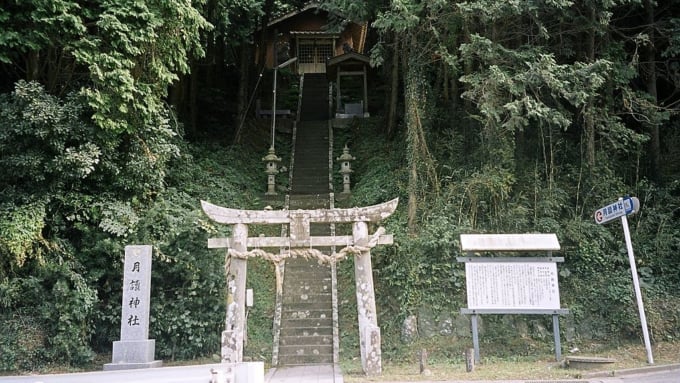
According to the "Kojiki" (Records of Ancient Matters), after Izanagi-no-Mikoto returned from the underworld and performed a purification ritual (misogi), three important deities were born: Amaterasu Omikami (天照大神) from his left eye, Tsukiyomi-no-Mikoto (月読尊) from his right eye, and Susanoo-no-Mikoto (須佐之男命) from his nose. These three deities are known as the Three Noble Gods (San-kishin).
Tsukiyomi Shrine is dedicated to Tsukiyomi-no-Mikoto, the deity of the moon, who represents freedom, equality, and peace. The Tsukiyomi Shrine in Kyoto’s Matsuo Taisha is actually a branch shrine of Iki’s Tsukiyomi Shrine. At Tsukiyomi Shrine, visitors can find various special amulets, including: "Kodomo Mamori" (Child Protection Amulet), "Yume Kanau Mamori" (Dream Fulfillment Amulet), "Mizu no Oto" (Water Sound Bell) – A lucky bell that produces a soothing sound similar to a water koto, and "Mayoke Kokeshi" (Protective Kokeshi Doll) – Used for warding off evil when placed at the home’s entrance or altar.
Name: Tsukiyomi Shrine
Address: 464 Kokubuhigashifure, Ashibe-cho, Iki City, Nagasaki Prefecture
Official/Related Website URL: http://tsukiyomijinja.com/
◆ Ondake Shrine
Located at the summit of Ondake Mountain in northeastern Iki Island, Ondake Shrine is dedicated to Sarutahiko-no-Mikoto, the deity of guidance. In the past, the entire mountain was considered sacred, and entry was forbidden.
However, today, visitors can drive up to a parking area near the summit. The large sacred rock, now regarded as the main object of worship, is considered a powerful energy spot. It is famous for causing compass needles to malfunction, a phenomenon that attracts many curious visitors. Additionally, the shrine grounds are home to over 200 stone monkey statues, donated as prayers for household safety, academic success, and fertility.
From the Ondake Observatory within the shrine grounds, visitors can enjoy a breathtaking panoramic view of Iki Island, making it one of the best viewpoints on the island.
Name: Ondake Shrine
Address: 1678 Hakozakihonmurafure, Ashibe-cho, Iki City, Nagasaki Prefecture
Official/Related Website URL: https://www.ikikankou.com/spot/10098
14. Haru Ichiban Tower
The meteorological term "Haru Ichiban" (Spring's First Wind) is said to have originated in Iki Island. Haru Ichiban refers to the first strong southerly wind that blows between the beginning of spring (Risshun) and the spring equinox (Shunbun). This term has long been used in Iki, where strong spring winds have historically caused tragic fishing boat accidents.
The phrase "Haru Ichiban" became widely known across Japan through songs and newspapers, spreading from Iki to the entire country.
To honor and respect nature, the Haru Ichiban Tower was built in 1987 at Motoi Park in Gonoura Port. The monument is designed in the shape of a ship's sail, symbolizing both the power of nature and the fishermen’s resilience.
Name: Haru Ichiban Tower
Address: 403 Gonoura, Gonoura-cho, Iki City, Nagasaki Prefecture
Official/Related Website URL: https://www.ikikankou.com/spot/10128
15. Yunomoto Onsen
Located in western Iki Island, Yunomoto Onsen is a reddish-brown sodium chloride hot spring. With a history spanning over 1,500 years, it is one of Iki’s ancient hot springs and is particularly famous as a "hot spring of fertility". Today, the Yunomoto Bay area is home to more than 10 ryokan (traditional inns) and day-use hot spring facilities, offering a relaxing experience for visitors.
Name: Yunomoto Onsen
Address: Katsumoto-cho, Iki City, Nagasaki Prefecture
Official/Related Website URL: https://www.ikikankou.com/spot/10114
◆ Umi no Eki Yugappa
Umi no Eki Yugappa is a tourism facility established by local volunteers to revitalize Yunomoto Onsen. It serves as a visitor center, providing information about Yunomoto Onsen and Iki sightseeing, making it a great spot to stop by.
At the souvenir shop, visitors can purchase local Iki specialties and souvenirs. There are also popular hands-on activities, including:, Fish sausage-making experience, Gyogyo-don (seafood rice bowl) making experience, and Fishing experience.
Name: Iki Yugappa Umi no Eki (Umi no Eki Yugappa)
Address: 26-31 Yunomotoura, Katsumoto-cho, Iki City, Nagasaki Prefecture
Official/Related Website URL: http://yugappa.com/wp/
◎ Summary of Recommended Sightseeing Spots in Iki
Iki, the island where gods dwell, is home to numerous powerful spiritual sites and fascinating attractions. From mythological landscapes to mysterious energy spots, Iki offers a unique travel experience. Whether you're exploring sacred shrines, enjoying breathtaking natural scenery, savoring fresh uni and Iki shochu, or soaking in relaxing hot springs, Iki has something special to offer. Despite being an easily accessible destination, Iki feels like a hidden gem waiting to be discovered. Why not embark on a journey to experience the magic and charm of Iki Island for yourself?
RELATED ARTICLES
REGIONS
CATEGORIES
FEATURED ON Guide
-
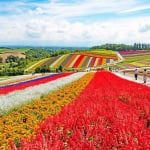
Where will you go for the summer vacation? Introducing recommended spots for domestic travel
-
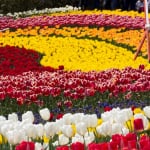
Kaizu City’s Recommended 7 Tourist Spots. Enjoy the Culture and History Nurtured by Wajū!
-
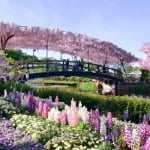
What Makes Ashikaga Flower Park So Special? A Treasure Trove of Photo-Worthy Spots!
-
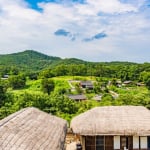
600 Years of Radiant Tradition: Korea’s Historic Villages of Hahoe and Yangdong
-
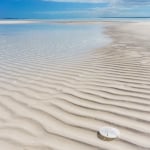
Two-Colored Seas and a Pink Beach! 4 Must-Visit Spots in North Eleuthera
MOST POPULAR ON Guide
-
 1
1Doha: Must-see Attractions in the Capital of Qatar
-
 2
2Toronto: 10 Things to do in this Picturesque Canadian City
-
 3
3Amarillo: A City Famous for It’s Amazing Canyons, Great History and Music
-
 4
4South Korea: Dazzling Scenery, Rich Culture and Fascinating History
-
 5
5Kuwait: A Country in Middle East Asia Famous for Hot Sand Dunes and Stunning Cityscape

